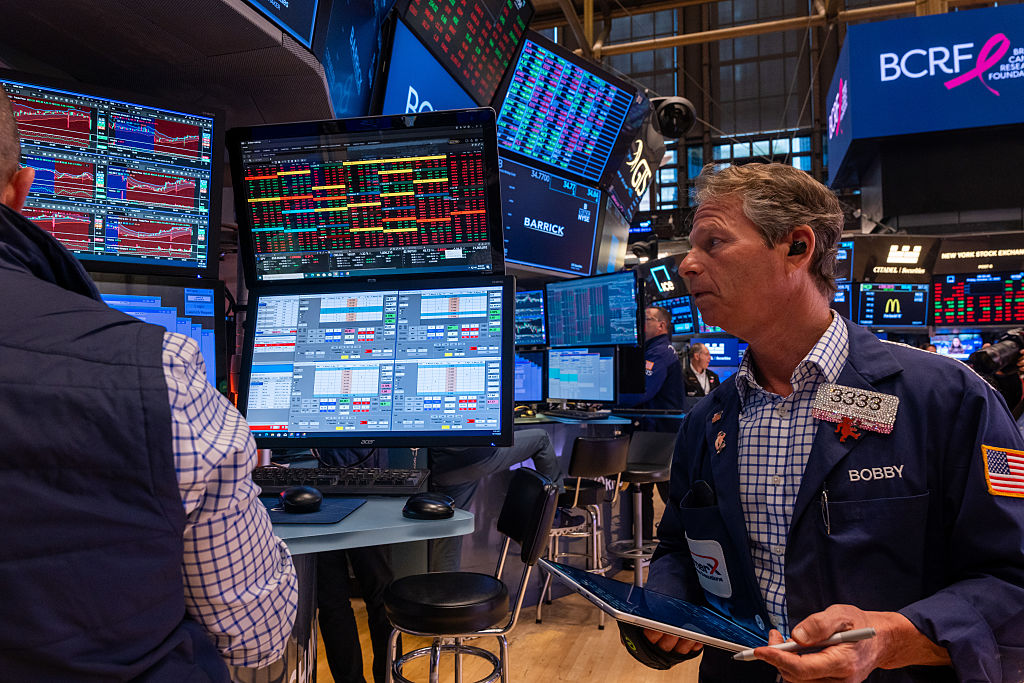Central bankers won’t tell you – but they’d like inflation to be higher
There are two ways to destroy the debt burden the world is still struggling under – deflation or inflation. John Stepek explains why inflation is the lesser of two evils.


Investors get bored quite easily, I've noticed.
A new story comes around and it looks good. They put money on it. It doesn't materialise within five minutes. They throw their hands in the air like a sulky teenager and march off to something else.
That's why they don't make as much money as they should.
MoneyWeek
Subscribe to MoneyWeek today and get your first six magazine issues absolutely FREE

Sign up to Money Morning
Don't miss the latest investment and personal finances news, market analysis, plus money-saving tips with our free twice-daily newsletter
Don't miss the latest investment and personal finances news, market analysis, plus money-saving tips with our free twice-daily newsletter
The latest story to incur their frustration is the inflation comeback. US ten-year Treasury yields poised until recently to rise above the magic 3% level have now slipped back to around 2.8%.
So is this loss of faith reasonable?
I don't think so.
Why central bankers should be aiming for higher inflation
Niels C Jensen, who writes The Absolute Return Letter (and has just written a book, The End of Indexing, which I haven't read yet but fully intend to) is always an interesting commentator.
It's also always nice when an intelligent person independently agrees with your own view, so I thought I'd share his take on the "big picture" outlook with you, mainly because I agree with it (yes, I know that's some serious confirmation bias in action, but at least you know what you're getting).
As Jensen reminds us, the world is still very indebted. Indeed, he argues that we haven't yet really recovered from the 2008 financial crisis. In order to get back to full health, we need to destroy debt. "I would argue that debt destruction is the only way for a society to start afresh, when the ship is about to sink."
There are only two ways to do that (ie, destroy debt rather than actually pay it off). You either default on it you just turn around and say you can't pay or you inflate it away you pay it back, but you pay it back with money that's worth less than the money you borrowed in the first place. It's like defaulting, but it's the sneaky, tactful way to default.
Which hurts more? Well, it depends on who you are, to an extent. But one road leads to deflation and the other obviously to inflation.
Default is the deflationary option. If everyone turns around and tells their creditors to whistle for the money, that is pretty devastating. Credit availability tightens right up. Banks go bust. Unprotected savers can lose the cash they thought was safe, and nobody can borrow money, even for worthwhile projects.
It's all very messy and it forces the economy to shrink. This is what happened in both the Depression and in 2008. So as 2008 is the most recent catastrophe to be visited upon us all, it's the one that's freshest in mind and the one that everyone wants to avoid a repeat of (it's why we printed all that money after the financial crisis, after all).
What about inflation? Well, that's the route we took in the late 1960s and throughout the 1970s to 1981, notes Jensen. (You can read more on the 1960s parallel here).
Putting it bluntly, the 1970s were no picnic for investors. I wasn't there for half of it and I was too young to have any idea of what was going on for the rest of it. But I don't get the impression that it was fun. (Here's a piece on just how bad the bear market got).
Nevertheless, says Jensen, your average central banker is likely to prefer the 1970s rather than the 1930s as a way out. "A bit of inflation will most definitely do some damage, but it won't take the global economy down, like a re-run of 2008 could possibly do."
(It's also worth noting that they're less likely to cop the flak for a 1970s-style outcome, whereas they would definitely be derided for 1930s-style outcome, which most academics blame on the US Federal Reserve tightening monetary policy too quickly).
In order to destroy debt via inflation, prices have to rise more rapidly than interest rates.
And as Jensen notes, as well as destroying the debt by repaying it with devalued money, rising bond yields would "suddenly bring a very sick defined-benefit pension industry back to life, which would lift a huge burden off government's shoulders."
That's why central bankers in theory will be keeping their fingers crossed for inflation to keep rising. They'll aim to "stay behind the curve" in other words, they might keep raising rates, but they'll try to make sure they don't actually choke off inflation.
So it would make perfect sense for Fed chair Jerome Powell, the Bank of England's Mark Carney and the rest of the world's central bankers to try to keep a higher inflation target in mind (although they'd never tell us that, of course).
It would be a big surprise if the Fed turned hawkish
As always with markets, of course, there's a bit of a fly in the ointment.
What if central bankers and Powell in particular aren't on board with the plan? What if Powell really is more hawkish than anyone thinks?
In that case, reckons Jensen, we'd be looking at a deflationary bust in the short-term (rather than the long-term, which is where Jensen thinks we're still headed I'm not so sure on that, but that's for another day).
My own view is that hawkishness seems unlikely, and even if Powell is hawkish right now, it'll be knocked out of him at the first setback.
What does Donald Trump want? Low interest rates, a rising stockmarket, and probably a weak currency. What does the institutional memory of the Fed currently fear most? The Depression and deflation.
I'd be very surprised if Powell can resist all that. And why should he? At this point, there is no real happy ending for the Fed. Might as well put the bust off for as long as possible.
So despite the recent drop in US Treasury yields (which was driven, I suspect, largely by investors having grown too excited about the idea of selling off Treasuries, thus creating a temporary contrarian opportunity to buy back in), I'm sticking with my view that inflation will be at the heart of the next crisis.
When that happens to roll around, on that I'm not so sure. But I'll be keeping a close eye on the indicators that will tell us it's heading our way.
Get the latest financial news, insights and expert analysis from our award-winning MoneyWeek team, to help you understand what really matters when it comes to your finances.
John Stepek is a senior reporter at Bloomberg News and a former editor of MoneyWeek magazine. He graduated from Strathclyde University with a degree in psychology in 1996 and has always been fascinated by the gap between the way the market works in theory and the way it works in practice, and by how our deep-rooted instincts work against our best interests as investors.
He started out in journalism by writing articles about the specific business challenges facing family firms. In 2003, he took a job on the finance desk of Teletext, where he spent two years covering the markets and breaking financial news.
His work has been published in Families in Business, Shares magazine, Spear's Magazine, The Sunday Times, and The Spectator among others. He has also appeared as an expert commentator on BBC Radio 4's Today programme, BBC Radio Scotland, Newsnight, Daily Politics and Bloomberg. His first book, on contrarian investing, The Sceptical Investor, was released in March 2019. You can follow John on Twitter at @john_stepek.
-
 Why Trustpilot is a stock to watch for e-commerce exposure
Why Trustpilot is a stock to watch for e-commerce exposureTrustpilot has built a defensible position in one of the most critical areas of the internet: the infrastructure of trust, says Jamie Ward
-
 Tetragon Financial: An investment trust with stellar returns
Tetragon Financial: An investment trust with stellar returnsTetragon Financial has performed very well, but it won't appeal to most investors – there are clear reasons for the huge discount, says Rupert Hargreaves
